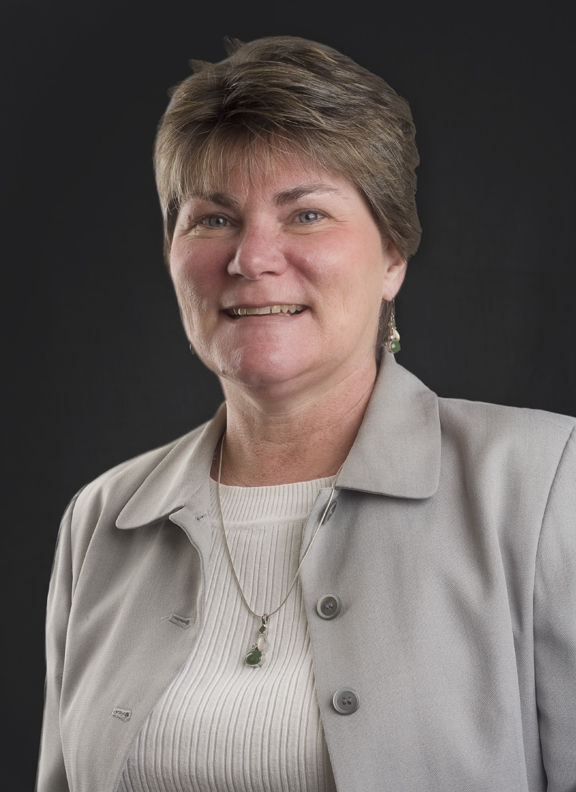U.S. Distance Education Adoption by the Numbers: an IPEDS Reality Check
Published by: WCET | 3/5/2014
Tags: Distance Education, IPEDS, Research, Survey, U.S. Department Of Education
Published by: WCET | 3/5/2014
Tags: Distance Education, IPEDS, Research, Survey, U.S. Department Of Education
This is the first of a series of posts providing insight on data regarding enrollments in distance education that was released by the U.S. Department of Education earlier this year. Terri Straut crunched the data for WCET. Terri has a deep knowledge of the distance education world and we appreciate her thorough analysis. As noted below, Phil Hill of the e-Literate blog has published several articles on this issue. We communicated with him to make sure that our work was complementary with his and followed the same methodology.
Russ Poulin, WCET
We’ve all heard the hype about online learning and how it is challenging and changing our models in higher education. As a long-time member of this industry, I was excited to dig in when new data was released in early January from the United States Department of Education’s National Center for Educational Statistics (NCES). For the first time in many years, the Integrated Postsecondary Education Data System (IPEDS) Fall Enrollment survey included counts of students taking Distance Education courses in Fall 2012.
With this data, we can finally get a comprehensive, objective look at the current state of distance education adoption nationally. The new data shows that one in four (26%) students enrolled in at least one distance education course in the Fall of 2012. That’s 5.4 million student enrollments, an impressive level of adoption, but it hardly lives up to the hype that often suggests that technology is totally changing the way teaching and learning are conducted in higher education. Since the IPEDS data uses the term Distance Education (DE) that is the term we will use.
The Methodology (and Thanks to Phil Hill)
Analysis of the IPEDS data was conducted on all degree granting institutions in the U.S. This presents 4,726 institutions of higher education (IHE) in total, both 4-year and 2-year colleges. This data set matches the data set that Phil Hill, edtech author and blogger at e-Literate, has used in his recent blogs that analyze the new DE data. According to Phil, the data set also matches the historical data reported by the Babson Survey Research Group (BSRG)/Sloan-C/Pearson survey. In order to approximate the same measures used by the prior survey, the data fields, “enrolled exclusively in DE courses” and “enrolled in some but not all DE courses” were combined to match the Babson category “enrolled in at least one online course”. Phil previously published the data on DE enrollments for public institutions. Huge thanks to Phil for his early analysis of the newly available data and for his collaboration with the BSRG to ensure that the two data sets can be compared appropriately. Phil has also done a fine job of illuminating the differences in the data and definitions used.
Adoption of Distance Education
In this analysis for WCET, I looked at all of the DE data fields for all degree-granting institutions in the U.S. We did not differentiate between undergraduate and graduate course enrollments in this data analysis. Data on the adoption of distance education is reported by state in the table below. States are ranked by the data field % at least one DE course to provide comparisons to previous Babson data and Phil’s analysis of public institutions published in e-Literate. Note that the % at least one DE course column is the sum of the % of exclusively DE courses and % at least one DE course columns. The data for the District of Colombia is also reported since it was reported in the IPEDS data.
Percentage of Students Taking at Least One Distance Education Course,
All Degree-granting Institutions,
By State and Ranked by Highest Percentage
|
Rank |
State |
% exclusively DE courses |
% some but not all DE courses |
TABLE SORTED BY: |
% no DE courses |
Total Enrollments |
| 1 | AZ |
49% |
17% |
66% |
34% |
736,379 |
| 2 | WV |
41% |
12% |
52% |
48% |
162,179 |
| 3 | IA |
40% |
9% |
49% |
51% |
361,183 |
| 4 | MN |
26% |
13% |
39% |
61% |
451,661 |
| 5 | ND |
23% |
16% |
39% |
61% |
55,169 |
| 6 | ID |
13% |
24% |
37% |
63% |
108,008 |
| 7 | UT |
23% |
13% |
36% |
64% |
267,309 |
| 8 | FL |
17% |
18% |
35% |
65% |
1,154,929 |
| 9 | VA |
19% |
16% |
35% |
65% |
588,696 |
| 10 | SD |
21% |
14% |
35% |
65% |
56,058 |
| 11 | AL |
16% |
19% |
35% |
65% |
310,311 |
| 12 | AK |
17% |
18% |
35% |
65% |
32,797 |
| 13 | NC |
12% |
22% |
33% |
67% |
578,031 |
| 14 | NE |
17% |
16% |
33% |
67% |
139,578 |
| 15 | KY |
20% |
11% |
31% |
69% |
282,125 |
| 16 | KS |
16% |
16% |
31% |
69% |
213,786 |
| 17 | OK |
11% |
20% |
31% |
69% |
228,464 |
| 18 | NM |
13% |
18% |
31% |
69% |
156,424 |
| 19 | NV |
10% |
20% |
30% |
70% |
118,300 |
| 20 | CO |
20% |
10% |
30% |
70% |
367,055 |
| 21 | AR |
9% |
20% |
29% |
71% |
176,458 |
| 22 | WY |
11% |
18% |
29% |
71% |
37,812 |
| 23 | MO |
12% |
15% |
28% |
72% |
441,371 |
| 24 | ME |
14% |
13% |
27% |
73% |
72,810 |
| 25 | HI |
11% |
16% |
27% |
73% |
78,456 |
| 26 | IN |
11% |
15% |
26% |
74% |
447,262 |
| 27 | MD |
15% |
11% |
26% |
74% |
379,032 |
| 28 | MS |
9% |
16% |
26% |
74% |
176,665 |
| 29 | TX |
9% |
17% |
26% |
74% |
1,540,298 |
| 30 | GA |
10% |
15% |
25% |
75% |
545,358 |
| 31 | OH |
10% |
14% |
24% |
76% |
709,818 |
| 32 | NH |
18% |
6% |
24% |
76% |
82,678 |
| 33 | TN |
6% |
18% |
24% |
76% |
343,641 |
| 34 | OR |
9% |
14% |
23% |
77% |
254,695 |
| 35 | SC |
6% |
16% |
22% |
78% |
259,617 |
| 36 | PA |
8% |
14% |
22% |
78% |
777,242 |
| 37 | WI |
8% |
13% |
21% |
79% |
369,732 |
| 38 | MT |
6% |
14% |
21% |
79% |
53,254 |
| 39 | IL |
10% |
10% |
20% |
80% |
867,110 |
| 40 | VT |
10% |
9% |
19% |
81% |
44,703 |
| 41 | NJ |
8% |
11% |
19% |
81% |
439,965 |
| 42 | WA |
8% |
11% |
18% |
82% |
365,514 |
| 43 | MI |
7% |
11% |
18% |
82% |
663,825 |
| 44 | CA |
6% |
11% |
17% |
83% |
2,621,460 |
| 45 | DE |
7% |
10% |
17% |
83% |
58,128 |
| 46 | LA |
4% |
12% |
16% |
84% |
258,825 |
| 47 | NY |
6% |
9% |
16% |
84% |
1,315,590 |
| 48 | CT |
7% |
7% |
15% |
85% |
202,625 |
| 49 | MA |
6% |
8% |
14% |
86% |
516,331 |
| 50 | RI |
2% |
10% |
12% |
88% |
83,952 |
| 51 | DC | 8% |
3% |
11% |
89% |
90,150 |
|
Totals |
|
13%
|
14%
|
26%
|
74%
|
20,642,819
|
In interpreting the data, the percentage is of all students enrolled in institutions located in that state, NOT of all students resident in that state. Take Arizona as an example. The 49% of student who are “enrolled exclusively in DE courses” takes into account the large number of students that are enrolled at institutions (i.e., Arizona State University, Grand Canyon University, University of Phoenix) located in that state. It does NOT mean that 49% of higher education students in the state of Arizona are “enrolled exclusively in DE courses.”
Overall, about one in four degree-seeking students (5.4 million) in the U.S. in Fall 2012 had some experience with distance education courses. Enrollment in DE courses (at least one DE course) represents 26% of all student enrollments for the period in U.S. degree-granting institutions. The definition of “at least one DE course” is admittedly a broad category, ranging from a student taking just one online course to those who have taken the majority, but not all, of their courses at a distance. But it is data that we can now track annually through IPEDS to quantify adoption and analyze trends.
A few key findings:
While there has been a lot of focus on fully online programs, the data shows that only about 13% of degree-seeking students in the U.S. were engaged exclusively in DE programs. It is also noteworthy that 74% of all U.S. students did not have a DE component, according to the IPEDS data. However, the data reveals large differences by state.
It is also important to remember that this reporting represents a combination of graduate and undergraduate DE courses, which may obscure much stronger adoption of fully online graduate programs. In fact, Richard Garrett’s reporting in University World News indicates, “close to one-third of U.S. graduate students are currently studying exclusively or majority online.” He also provides interesting analysis regarding the market concentration of the largest wholly DE institutions.
In addition to DE adoption by state, the WCET IPEDS data analysis looked at where the DE students are located in relation to the institutions that serve them. These numbers have implications for institutions in understanding their market scope, the need to provide student support services across a wide geographic range, and the state authorization policy issue. The next blog post will report those findings.
Terri Straut
Ascension Consulting
terri_straut@msn.com
If you like our work, join us!
4 replies on “U.S. Distance Education Adoption by the Numbers: an IPEDS Reality Check”
[…] « U.S. Distance Education Adoption by the Numbers: an IPEDS Reality Check […]
[…] by the U.S. Department of Education’s IPEDS survey on distance education (DE) enrollments. Our first blog post in this series looked at students enrolled exclusively or partially in distance education courses. Our second […]
[…] be able to track these adoption trends going forward. As reported in the first blog in the series U.S. Distance Education Adoption by the Numbers: an IPEDS Reality Check, when combining the counts of students who took all their courses at a distance and those who […]
[…] growth of student participation in distance education has started to hit a saturation point, and being “good” will no longer be enough to drive program growth and maximize student […]